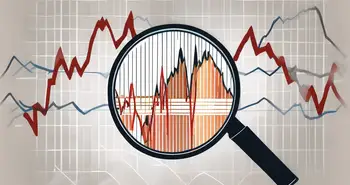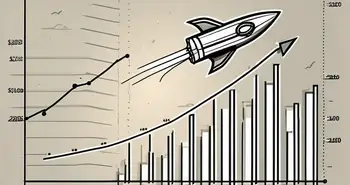How SPACs Are Transforming the Investment Landscape

As an expert in the financial industry, I am excited to present to you a comprehensive guide on the rising phenomenon of Special Purpose Acquisition Companies (SPACs). SPACs have gained significant traction in recent years, revolutionizing the way companies go public. In this article, we will explore what exactly SPACs are, their appeal for investors and companies, the SPAC process, potential risks and challenges, and speculate on the future of SPACs.
Understanding SPACs
Definition and Function of SPACs
Special Purpose Acquisition Companies, commonly known as SPACs, are entities formed with the sole purpose of merging or acquiring existing private companies, taking them public without going through the traditional Initial Public Offering (IPO) process. Essentially, a SPAC is a shell company that raises funds through an IPO, with the proceeds kept in an escrow account until a merger or acquisition opportunity arises.
Expert Advice: As an investor, do your due diligence and carefully review the proposed target company before committing. Make sure the management team has a solid track record and promising growth prospects.
SPACs offer a unique investment opportunity for both retail and institutional investors. Retail investors can participate in deals that were traditionally reserved for private equity firms and institutional investors. On the other hand, institutional investors can leverage their expertise in evaluating potential target companies and help drive the success of the SPAC.
The History of SPACs
SPACs have been around for decades, but their surge in popularity has gained momentum in recent years. One of the earliest SPACs was created by David Nussbaum in 1993, which successfully merged with and took public Starwood Hotels in 1995. Since then, SPACs have experienced both ups and downs, but it wasn't until the mid-2010s that they really took off.
The appeal of SPACs lies in their ability to provide a faster and more cost-effective route to going public compared to traditional IPOs. This streamlined process has attracted a wide range of companies looking to access public markets without the extensive regulatory scrutiny and time-consuming procedures associated with IPOs. Additionally, SPACs offer investors the potential for high returns if the merged company performs well post-acquisition, making them an enticing investment vehicle in today's dynamic market environment.
The Appeal of SPACs
Benefits for Investors
SPACs offer several benefits for investors. Firstly, they provide access to investment opportunities that were traditionally only available to venture capitalists or private equity firms. By investing in SPACs, retail investors can now participate in the growth potential of promising private companies.
Secondly, investing in a SPAC allows investors to diversify their portfolio. Since SPACs often target companies in specific industries or sectors, investors can strategically allocate their investments to diversify their risk exposure.
Lastly, investors in SPACs have the option to redeem their shares during a merger or acquisition process, providing some downside protection.
Moreover, SPACs can offer investors a unique investment structure that includes warrants or rights, providing additional upside potential if the SPAC performs well post-merger.
Advantages for Companies
For companies, choosing a SPAC route offers several advantages. Firstly, the merger or acquisition process with a SPAC is generally quicker and more cost-effective compared to a traditional IPO. This allows companies to access public markets and raise capital faster to fuel their growth plans.
Furthermore, going public through a SPAC provides companies with a higher level of certainty regarding the valuation and pricing of their shares, as it is negotiated up-front during the merger discussions.
In addition, companies that merge with a SPAC can benefit from the expertise and network of the SPAC sponsors, who often have a track record of successful investments and can provide valuable guidance and connections to help the company succeed post-merger.
The SPAC Process
Formation and Funding
A SPAC, or Special Purpose Acquisition Company, is typically created by a sponsor or a team of sponsors who have extensive experience in the respective industry or financial markets. These sponsors raise funds through an Initial Public Offering (IPO), where units consisting of common shares and warrants are offered to investors.
Once the IPO is completed, the proceeds are placed in an escrow account, usually earning interest until a suitable target company is identified. This ensures that the funds raised are securely held and ready to be utilized for the acquisition.
It is worth noting that the sponsors' expertise and reputation play a crucial role in attracting investors during the formation and funding stage. Investors are not only interested in the potential returns but also in the sponsors' ability to identify and execute a successful merger or acquisition.
The Search for Acquisition
After the formation and funding stage, the SPAC enters the exciting and critical stage of identifying and negotiating with a target company for a merger. The sponsors utilize their extensive expertise, industry knowledge, and vast network of connections to scout for attractive investment opportunities.
Expert Story: I recall a fascinating case where a SPAC, led by a team of seasoned biotech executives, identified a cutting-edge healthcare technology company as their target. The merger successfully propelled the once-private company to new heights, solving critical healthcare challenges along the way. This remarkable example showcases how SPACs can be instrumental in driving innovation and transforming industries.
During the search for acquisition, the sponsors carefully evaluate potential target companies based on various factors such as growth prospects, market position, competitive advantage, and alignment with the SPAC's investment thesis. This rigorous evaluation process ensures that the SPAC identifies a target company that has the potential to generate significant value for its investors.
The Merger Process
Once a suitable target company is identified, the SPAC and the target company enter into negotiations to determine the terms of the merger or acquisition. This includes crucial aspects such as valuation, ownership structure, and any additional requirements or conditions.
The negotiation process requires careful consideration from both parties to ensure a fair and mutually beneficial agreement. The SPAC aims to strike a balance between providing attractive terms to the target company's shareholders while also safeguarding the interests of its own investors.
Upon obtaining shareholder approval and successfully completing the merger, the target company becomes a publicly traded company, with the SPAC serving as the conduit for going public. This transition not only provides the target company with access to capital but also enhances its visibility and credibility in the market.
The SPAC process, from formation to merger, represents a unique and dynamic approach to bringing private companies into the public market. It offers a compelling opportunity for investors to participate in the growth potential of promising companies while benefiting from the expertise of experienced sponsors.
Risks and Challenges of SPACs
Potential Pitfalls for Investors
While SPACs present exciting investment opportunities, they are not without risks. One key risk for investors is the uncertainty associated with the target company selection. The success of the investment ultimately relies on the sponsors' ability to identify a suitable company with strong growth prospects.
Additionally, investors must be wary of the potential dilution of their ownership stake due to SPACs' unique structure, which often includes warrants and other financial instruments.
Regulatory Concerns
The widespread popularity of SPACs has raised regulatory concerns. Regulatory bodies, such as the U.S. Securities and Exchange Commission (SEC), are closely monitoring the SPAC market to ensure adequate levels of investor protection and transparency.
While we can expect some regulatory changes in the future, it is crucial for investors and companies to stay informed and navigate the evolving landscape with prudence.
The Future of SPACs
Market Predictions
The future of SPACs is subject to ongoing debate among industry experts. While some predict a continued surge in SPAC activity, others caution that market conditions and regulatory changes could impact their popularity.
It is essential for investors and market participants to closely monitor industry trends and regulatory developments to make informed decisions regarding SPAC investments.
Evolving Regulations
Regulatory bodies are closely scrutinizing the practices and disclosures of SPACs. As a result, we can expect regulatory changes aimed at enhancing investor protection and transparency.
In the face of evolving regulations, it is crucial for sponsors, target companies, and investors to work in tandem to ensure compliance while capitalizing on the unique opportunities that SPACs offer.
FAQ
Q: What is a SPAC?
A: A Special Purpose Acquisition Company (SPAC) is a shell company that raises funds through an IPO, with the intention of merging or acquiring an existing private company and taking it public.
Q: Why are SPACs appealing to investors?
A: SPACs provide investors with access to investment opportunities that were traditionally only available to venture capitalists or private equity firms. They also offer the opportunity to diversify their portfolio and potentially provide downside protection through redemption options.
Q: Why do companies choose SPACs over traditional IPOs?
A: Companies opt for SPACs because the merger or acquisition process is generally quicker and more cost-effective compared to a traditional IPO. It also provides a higher level of certainty regarding valuation and pricing.
Q: What are the risks associated with investing in SPACs?
A: Investors face risks such as uncertainty in target company selection and potential dilution of their ownership stake. Additionally, regulatory concerns pose risks and the evolving regulatory landscape should be carefully monitored.
Q: What does the future hold for SPACs?
A: The future of SPACs remains uncertain, with predictions ranging from continued growth to potential market and regulatory shifts. Staying informed and vigilant regarding market trends and regulatory changes is crucial for investors and market participants.
In conclusion, SPACs have disrupted the traditional IPO landscape, providing investors and companies with alternative paths to going public. While they offer exciting opportunities, it is important to understand the underlying risks and regulatory considerations associated with SPAC investments. By staying informed and making well-informed decisions, investors and market participants can navigate this dynamic market with confidence.
As you navigate the dynamic world of SPACs and consider the diverse investment opportunities they present, explore the innovative trading platform at Morpher.com. Embrace the future of investing with blockchain technology, zero fees, infinite liquidity, and the flexibility of fractional investing and short selling. Take control of your investments with the safety of the Morpher Wallet, and amplify your trades with up to 10x leverage. Join a community of forward-thinking investors on a platform that's as unique as the markets it offers. Sign Up and Get Your Free Sign Up Bonus today, and transform the way you trade across stocks, cryptocurrencies, forex, and more with Morpher.

Disclaimer: All investments involve risk, and the past performance of a security, industry, sector, market, financial product, trading strategy, or individual’s trading does not guarantee future results or returns. Investors are fully responsible for any investment decisions they make. Such decisions should be based solely on an evaluation of their financial circumstances, investment objectives, risk tolerance, and liquidity needs. This post does not constitute investment advice.

Painless trading for everyone
Hundreds of markets all in one place - Apple, Bitcoin, Gold, Watches, NFTs, Sneakers and so much more.

Painless trading for everyone
Hundreds of markets all in one place - Apple, Bitcoin, Gold, Watches, NFTs, Sneakers and so much more.









